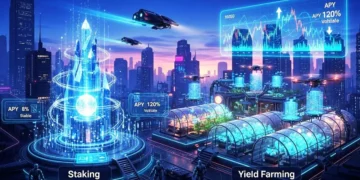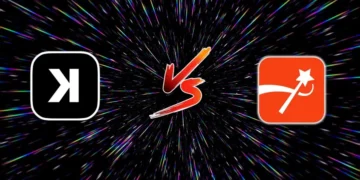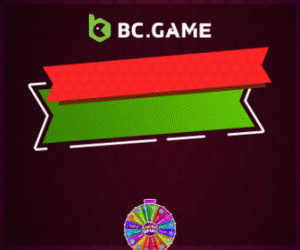Have you ever found yourself staring at a crypto candlestick patterns chart, watching the green and red bars flicker, and felt a sudden surge of hope or a pang of anxiety? You’re not alone. For many traders, these charts cease to be mere graphs and become a dreamscape where fortunes are won and lost. But what if the most important patterns aren’t on the screen, but in our own minds? This article delves deep into the fascinating world of candlestick psychology, exploring why understanding the human mind is the ultimate edge in the volatile crypto markets.
We’ll unpack the emotional stories told by each candle, explore must-know patterns, and provide actionable strategies to master your mindset. Whether you’ve searched for a crypto trading Psychology or wondered about the psychology behind engulfing candlesticks, you’re about to discover that successful trading is as much about self-awareness as it is about analysis.
The Power of Candlestick Psychology in Binary Options and Crypto
What Is Candlestick Psychology?
Candlestick psychology explores how each candle on a chart reveals the mindset of market participants. For traders in binary options, knowing how the market “feels” at a glance lets you predict reversals, ride trends, and dodge false signals. Whether it’s mastering hammer candles, engulfing patterns, or rapid scalp strategies, your edge comes from reading the room—and the chart.
“Candlestick patterns emerge because human actions and reactions are patterned and constantly repeated.” – The Candlestick Trading Bible
What is Candlestick Psychology? More Than Just Wicks and Bodies
At its core, candlestick psychology is the study of market sentiment as visualized through candlestick charts. Each candle is more than a simple record of price; it’s a vivid snapshot of the emotional battle between bulls and bears during a specific period.
A candlestick has three main components that tell this story :
The Body: Represents the opening and closing prices. A long green body signals strong buying pressure (bullish optimism), while a long red body indicates intense selling pressure (bearish fear).
The Upper Wick: Shows the highest price reached. A long upper wick on a red candle tells us buyers tried to push the price up, but sellers overwhelmed them, a sign of rejection.
The Lower Wick: Indicates the lowest price reached. A long lower wick on a green candle suggests sellers tried to drive the price down, but buyers fought back, creating a potential support level.
This visual language allows traders to gauge the psychology behind candlestick patterns quickly. Are the bulls confident? Are the bears exhausted? The answers are encoded in the wax and wane of each candle. Think about the last time you saw a Doji candle, where the open and close are nearly identical. What does that tell you about the market’s indecision at that moment?
The Trader’s Brain: How Emotions Shape the Charts
The charts themselves are a direct reflection of collective human emotion. The psychology of crypto trading is a constant cycle of greed driving prices to euphoric highs and fear triggering panicked sell-offs. When you understand that every pattern is driven by these primal emotions, you can start to anticipate market moves rather than just react to them.
A key concept is confirmation bias—the tendency to favor information that confirms our existing beliefs. Have you ever held onto a losing trade because you ignored a clear bearish candlestick pattern, focusing only on the hopeful green candles? That’s your brain playing tricks on you. Mastering candlestick psychology involves recognizing these biases in yourself and the market crowd.
Understanding Candlestick Patterns: Mindset Meets Market
Anatomy of a Candlestick
Each cryptocurrency candlestick pattern breaks down candles into the body and the wick. A long body shows strong sentiment; wicks reveal battles between buyers and sellers. The color matters too—green or white for bullish, red or black for bearish moves.
Top 10 Reversal Candlestick Patterns
Downloadable guides on Top 10 reversal candlestick patterns spot the most influential formations for traders. These include:
Hammer and Hanging Man (trend reversals)
Engulfing patterns (power shifts)
Shooting Star and Doji (signals of indecision or imminent reversal)
Morning Star, Evening Star, and Three White Soldiers (strong momentum changes)
Have you recognized any of these patterns before a major crypto rally or crash?
1 Minute Candlestick Psychology: The Scalper’s Secret
Rapid-day-traders and scalpers live by the 1 minute candlestick psychology—where each tiny candle can mean a huge opportunity or risk. At this timeframe, patterns like Doji, Hammer, Engulfing, and Marubozu reveal split-second sentiment shifts. Are you using 1-minute patterns for your crypto strategies?
Engulfing candlestick patterns: Shows the sudden shift in power—one candle literally “eats” the previous, signaling a rapid reversal.
Hammer and Inverted Hammer: Quick bounce signals, ideal for fast entry/exit.
Shooting Star and Hanging Man: Instant warning of trend exhaustion.
Trading Psychology: Beyond the Chart
Crypto Trading Psychology: Mastering Fear and Greed
True trading mastery, especially in crypto, means managing emotions. Research shows that cognitive biases—like FOMO, loss aversion, and overconfidence—drive many market moves. Use the latest Crypto trading Psychology PDF to learn techniques for:
Sticking to stop-loss orders
Avoiding impulsive trades
Keeping a growth mindset for continuous improvement
Decoding the Patterns: A Guide to Key Reversal Candlesticks
While there are dozens of patterns, some of the most powerful are reversal patterns. These formations signal a potential change in trend and are essential for any trader’s toolkit. Many trading guides, like those found in a Top 10 reversal candlestick patterns, highlight these critical formations. Let’s break down some of the most significant ones and the psychology behind them.
The Hammer and Hanging Man: A Tale of Rejection
Both of these patterns have small bodies and long lower wicks, but their meaning depends on the preceding trend.
The Hammer (Bullish Reversal): Appears after a downtrend. The long lower wick indicates that sellers pushed the price significantly down, but by the close, buyers aggressively stepped in and drove the price back up near the open. This is a classic sign of selling exhaustion and buyer strength. The psychology shifts from “I want to sell at any cost” to “This low price is a buying opportunity.”
The Hanging Man (Bearish Reversal): Found after an uptrend. It signals that although the buying continued for most of the period, sellers finally emerged and pushed the price down, creating a warning sign that the bullish momentum may be ending. The greed is being met with fear.
The Engulfing Pattern: A Battle Won
The engulfing pattern is a powerful two-candle formation that clearly shows a shift in control .
Bullish Engulfing Pattern: Occurs in a downtrend. The first candle is a small red one. The second candle, a large green one, completely “engulfs” the body of the first. The psychology behind engulfing candlesticks is straightforward: the bears were in control, but the bulls erupted with such force that they completely overwhelmed the previous day’s sentiment. It’s a decisive victory.
Bearish Engulfing Pattern: The opposite. After an uptrend, a small green candle is followed by a large red candle that engulfs it. This indicates that the bulls are exhausted, and sellers have seized control with conviction.
Validating these patterns is crucial. For example, some strategies suggest that a valid engulfing pattern should engulf between 51% to 149% of the previous candle’s body for optimal significance .
The Doji: The Ultimate Indecision
When the open and close are at the same level, a Doji is formed. This pattern represents a perfect equilibrium between buyers and sellers. The candlestick psychology of a Doji is one of utter indecision and hesitation. It’s a warning that the current trend may be losing steam and a potential reversal is brewing, especially if it appears after a long trend. The Gravestone Doji (long upper wick) and Dragonfly Doji (long lower wick) provide even more nuanced signals of rejection .
Table: Key Reversal Candlestick Patterns and Their Psychological Meaning
| Pattern Name | Trend Context | What the Pattern Reveals | Market Psychology |
|---|---|---|---|
| Hammer | Downtrend | Sellers pushed price down, but buyers recovered it. | Selling exhaustion; buyers are gaining confidence. |
| Bullish Engulfing | Downtrend | A large green candle completely swallows a prior red candle. | Bulls have decisively overpowered the bears. |
| Piercing Line | Downtrend | A green candle opens below the prior red candle’s close but closes above its midpoint. | Buyers are aggressively stepping in at lower prices. |
| Hanging Man | Uptrend | Buyers lost control during the period, with sellers pushing price down. | Bullish momentum is waning; fear is entering the market. |
| Bearish Engulfing | Uptrend | A large red candle completely swallows a prior green candle. | Bears have decisively overpowered the bulls. |
| Shooting Star | Uptrend | A candle with a long upper wick after a rally. | Buyers pushed price high, but sellers rejected the advance. |
The High-Stakes World of 1-Minute Candlestick Psychology
Trading on shorter timeframes, like using a 1 minute candlestick psychology approach, amplifies both the opportunities and the psychological challenges. On a 1-minute chart, price action is frenetic, and emotions can flare up in an instant.
Many new traders, like the one in the forum post, find it difficult “not to get caught up in the 1-minute candle action,” becoming so fixated on the micro-movements that they lose sight of the broader trend . This hyper-focus can lead to “trigger-happy” trading and losses from not allowing setups to develop.
So, how can you apply 1 minute candlestick psychology effectively?
Use it for Precision, Not Direction: The 1-minute chart is excellent for refining entry and exit points. For example, you might use a higher timeframe like the 5-minute or 15-minute chart to identify the overall trend and a key support level. Then, you can switch to the 1-minute chart to wait for a bullish hammer or engulfing pattern to form right at that support level, giving you a high-probability entry.
Respect the Moving Averages: On a 1-minute chart, moving averages like the 9-period and 20-period Exponential Moving Average (EMA) become critical dynamic support and resistance levels. A common strategy is “waiting for the price to go back to the EMA-20” for a quick scalp trade . The psychology here is that in a strong trend, the price will tend to “respect” these averages and bounce off them.
Implement a 1-2 Minute Rule: To manage risk on such a fast timeframe, some traders use a strict rule: if a trade doesn’t move in your favor within the first 1-2 minutes, it’s often best to exit . This prevents small losses from turning into large ones.
The key takeaway is that the 1 minute candlestick psychology is not about trading every flicker. It’s about using the heightened emotional volatility visible on this timeframe to your advantage, entering trades with confirmed momentum from higher timeframes.
Building Your Psychological Toolkit: From Knowledge to Mastery
Understanding patterns is one thing; developing the discipline to trade them effectively is another. This is where the true psychology of crypto trading comes into play. It’s about building habits that protect you from your own worst impulses.
The Importance of a Trading Journal
Why did you enter that trade? Was it because of a valid candlestick pattern or because you were afraid of missing out (FOMO)? A trading journal where you record the setup, your emotional state, and the outcome is invaluable. Over time, it will reveal your personal psychological biases and help you improve your decision-making process.
Risk Management: Your Psychological Safety Net
Before you enter any trade, know exactly how much you are willing to lose. Using stop-loss orders automatically is a non-negotiable practice. It removes the emotion from exiting a losing trade. When you know your risk is capped, the emotional charge of seeing a trade move against you is significantly reduced, allowing you to think more clearly.
Continuous Learning: The Best Investment You Can Make
The market is always changing. Committing to continuous education is a sign of a professional mindset. This could involve reading a comprehensive candlestick psychology book , analyzing your past trades, or studying market cycles. The more you learn, the more confident and less emotional you will become.
Conclusion
So, why do crypto traders dream in candlestick charts? Because these charts are a direct window into the collective soul of the market—a swirling mass of fear, greed, hope, and regret. The patterns we’ve explored, from the decisive engulfing pattern to the hesitant Doji, are archetypes of human behavior playing out on a financial battlefield.
Mastering candlestick psychology is not about finding a magical pattern that guarantees success. It is a journey of using these patterns to understand market sentiment while simultaneously undertaking the more critical work of understanding your own psychological makeup. The ultimate goal is to reach a point where you can observe the patterns without being controlled by the emotions they represent.
Do professional traders use candlestick patterns? Absolutely. But they use them as one tool in a larger toolbox that includes trend analysis, volume, and, most importantly, rock-solid risk management and self-awareness.
The path to becoming a successful trader begins here. Start by looking at the charts not just as a way to predict price, but as a way to understand psychology. What will you see when you look into the candle’s flame?
Frequently Asked Questions (FAQs)
What is the psychology behind the candlestick chart?
Candlestick charts are a visual representation of the psychological battle between buyers (bulls) and sellers (bears) in a market. Each candle’s shape and color—the size of the body, the length of the wicks—communicate the intensity of emotions like greed (driving prices up) and fear (driving prices down) during a specific time period. They reveal who is winning the emotional conflict at any given moment.
What is the psychology of crypto trading?
The psychology of crypto trading involves managing your own emotions—primarily fear and greed—in a highly volatile market. It’s the discipline to stick to a trading plan, avoid impulsive decisions based on FOMO (Fear Of Missing Out) or panic, and to maintain objectivity. Success is often determined more by a trader’s emotional control than their analytical skills.
What is the psychology behind engulfing candlesticks?
The psychology behind engulfing candlesticks is one of a decisive power shift. In a bullish engulfing pattern, pessimism (the small red candle) is suddenly and completely overwhelmed by aggressive optimism (the large green candle), indicating a surge in buyer confidence. Conversely, a bearish engulfing pattern shows that optimism has been extinguished by a wave of fear and selling pressure, signaling a potential trend reversal .
Do professional traders use candlestick patterns?
Yes, professional traders use candlestick patterns extensively. However, they rarely use them in isolation. Professionals combine candlestick signals with other forms of technical analysis (like trend lines, support/resistance levels, and volume indicators) and strict risk management rules. They understand that patterns indicate probability, not certainty, and use them as a framework for understanding market sentiment within a broader trading strategy.






































